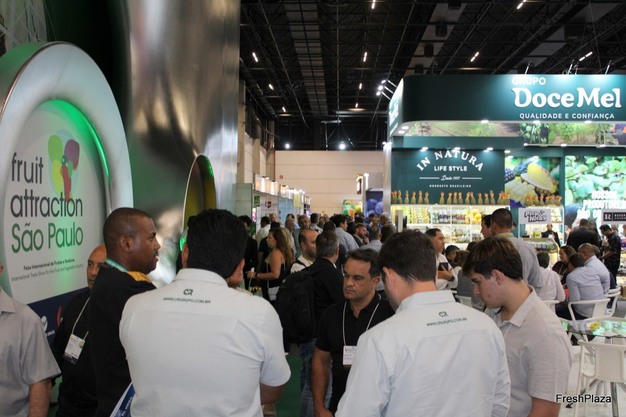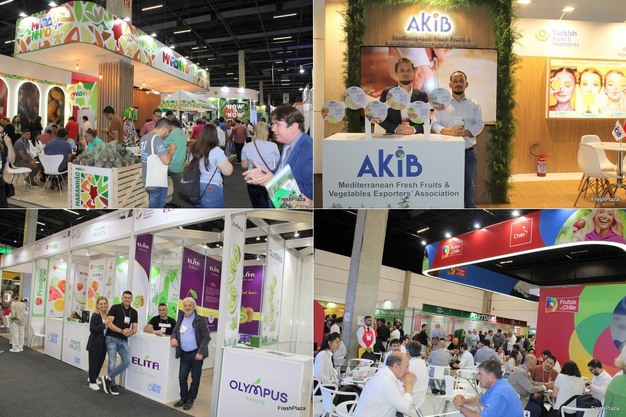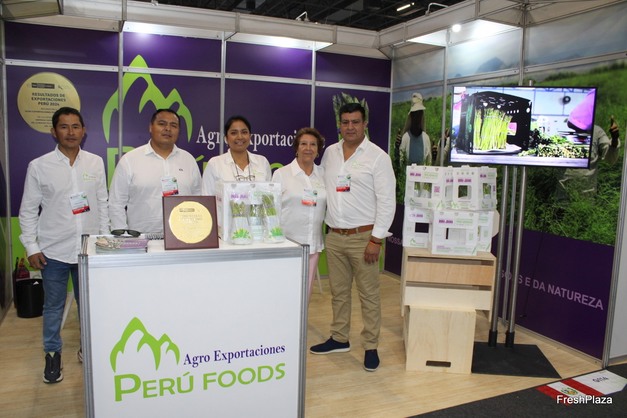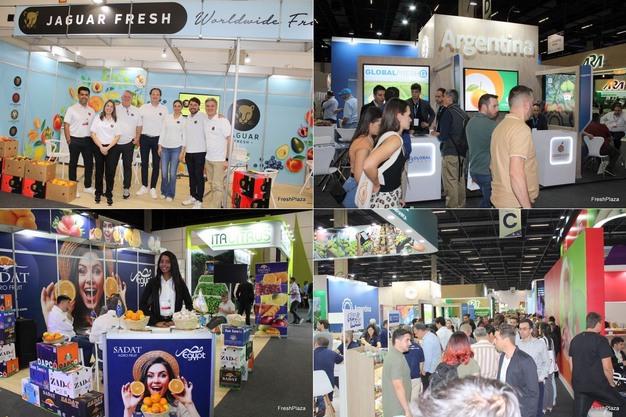The second day of the Fruit Attraction São Paulo fair was more crowded than the opening day. There was a notable increase in visitors, including local producers, institutional representatives, and buyers from the domestic market.
 © Diana Sajami | FP.com
© Diana Sajami | FP.com
"Fruit Attraction São Paulo has already consolidated itself as the largest fruit fair in South America," stated Guilherme Coelho, president of Abrafrutas, in a forum reiterating the event's relevance for the sector. He also highlighted the presence of more than 30 small producers from the São Francisco Valley, supported by SEBRAE, who participated in establishing commercial ties.
 © Diana Sajami | FP.com
© Diana Sajami | FP.com
In addition to the state of São Paulo, local producers and marketers represented other Brazilian regions such as Pernambuco, Bahia, and Maranhão. According to some attendees, the fair has served as a platform to access the national market and make international contacts.
The fair also had stands from Chilean companies, which focused on promoting kiwi, as well as companies from Argentina, France, Italy, Turkey, Greece, Egypt, the Netherlands, and Portugal. Peru was only represented by the Agro Exportaciones Peru Foods company, which showcased products like asparagus.
 © Diana Sajami | FP.com
© Diana Sajami | FP.com
Intermediaries or brokers operating in the Brazilian market visited different stands and purchased fruit from different Latin American origins for local distribution. They held meetings throughout the day aimed at supplying Brazil's domestic market.
 © Diana Sajami | FP.com
© Diana Sajami | FP.com
Moreover, the absence of countries such as Colombia, Mexico, Guatemala, Panama, and Costa Rica was notable. According to some sources, although the Brazilian market offers opportunities, logistics remains a challenge. In particular, they said, delays at ports and the costs of land transport, which, although faster, represent a greater investment for exporters.
This second day highlighted the growing interest in the Brazilian market, both nationally and internationally. However, it also underlined the need to overcome logistical barriers to facilitate a more efficient trade flow between countries in the region.

